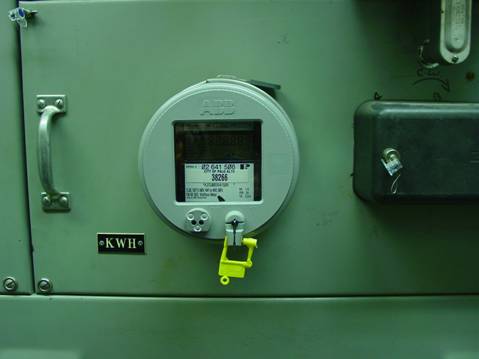Automated Energy

Getting Amped Over Internet Meter Reading
“With its UDS100, Lantronix offered the necessary connectivity with technology that wouldn’t interfere with the way the City’s connected devices already worked. The end result is a compatible pair of technologies that work together seamlessly.” George Bell, Automated Energy
Automated Energy has built a reputation as a company that empowers business and government agencies with the tools to evaluate and understand their energy consumption. During the 2001 rolling blackouts in California, Automated Energy consulted with utility companies to create commercial demand reduction programs (DRP) which worked real-time to alert when power draws in a certain area became too heavy. With the DRP, power could be reduced or shut off, or transferred from one area to another allowing energy costs to be adjusted in real-time. One of the biggest challenges in this process was working with the telephone companies for dedicated lines to each meter with an individual phone number for every customer purchasing the DRP system.
Power / Utilities
THE SITUATION: INTEGRATE DIAL-UP AND MANUAL METERING SYSTEMS INTO A UNIFORM SYSTEM OVER FIBER
The City of Palo Alto Utilities consulted with Automated Energy to find a solution for effectively enhancing its existing Advanced Metering program using the city’s fiber network. The major challenge was that the city had two different meter-reading systems: a dial-up modem system for reading electric meters and a manual system for reading gas and water meters. The city’s meter shops had been using telephone-based communications and devices on an as-needed basis for load research and customer requested information. Palo Alto has a dark-fiber utility, so that utility data can be shared over its fiber network. The City’s goal was to pilot test a means to obtain timely building metered data while eliminating the need for dial-up communication in selected sites.
THE SOLUTION: AUTOMATED ENERGY’s iMETER AND THE LANTRONIX UDS100
Together, they determined this problem could be solved with Automated Energy’s iMETER. This Remote Reading Application enables users to retrofit existing Interval Data Recording (IDR) meters to communicate over the Internet and eliminate additional dial-up lines, tying up valuable phone lines and avoiding the risk of missed data.
To provide the network connectivity, Automated Energy turned to the Lantronix UDS100 device server. An ideal modem replacement, the UDS100 provides a quick, simple and cost-effective way to bring the advantages of data accessibility and remote management to equipment not currently connected to a network. Using a method called serial tunneling, the UDS encapsulates serial data into packets and transports it over Ethernet.
“To meet the City’s needs, we needed to combine the merits of our iMETER solution with a robust networking solution,” said George Bell of Automated Energy. “Lantronix offered the necessary connectivity with technology that wouldn’t interfere with the way the City’s connected devices already worked. The end result is a compatible pair of technologies that work together seamlessly.”
The City of Palo Alto Utilities then conducted a trial of this solution at Palo Alto City Hall to read the electric, water and gas meters via fiber. The meters were connected through the UDS100, providing the ability to be specially configured for use with the meter communications protocol, thus allowing users a more efficient way to remotely monitor, manage and share connected devices over a network or the Internet. Palo Alto just needed to provide a local area network (LAN) to connect to a local switch or the Internet.
The UDS Advantage
MODEM REPLACEMENT
In modem emulation mode, the UDS is used to replace dial-up modems. The unit accepts modem AT commands on the serial port then establishes a network connection to the end device. It leverages network connections to eliminate modems and dedicated phone lines, and provide higher bandwidth.
ACCESS AND MANAGEMENT
The UDS provides a quick, simple, cost effective way to bring the advantages of data accessibility and remote management to devices that are not currently connected to a network.
PRODUCT SELECTION
The UDS product line features single and two-port models, broad power input range (9-30 VDC), and serial support for RS-232, RS-422 or RS-485.
LANTRONIX APPROACH
The Lantronix approach to networkenabling devices is transparent to all attached devices and software, so users never have to change the way they work or develop special software to take advantage of Ethernet networking.
THE RESULT: SIMPLIFIED AND IMPROVED SERVICE USING EXISTING INFRASTRUCTURE
With this solution, the City of Palo Alto Utilities was able to successfully pilot a robust and reliable channel of data communications that can potentially eliminate meter reporting issues commonly due to communications errors and problems with phone lines. In addition, this pilot program proved the ability to eliminate the cost of dedicated phone lines and costs related to managing those lines. By preserving the existing meter and network infrastructure and simplified service, this solution provided a method to be able to easily adapt to new market requirements such as RTP, DRP and others.
“As a pilot project, we have been able to successfully demonstrate that we can read our electrical, gas and water meters at City Hall using our dark fiber backbone as a communication backbone,” said Tom Auzenne, assistant director, Utilities Administration Services for the City of Palo Alto. “In addition, this project allowed us to utilize the Internet as the medium to access the meter data quickly and easily.”
Automated Energy is currently working with three other major utility companies to implement a similar ASP program based on the Ethernet-enabled IDR meter technology. “There is a huge potential here,” says Automated Energy’s George Bell. “As utilities realize the benefits of eliminating telephone lines and managing their meters over the Internet, the demand will continue to grow in electricity, water and gas. PG&E, for example, has approximately 4,000 IDR meters in place currently, and there is a strong push from the State of California to implement real-time market value pricing.”
